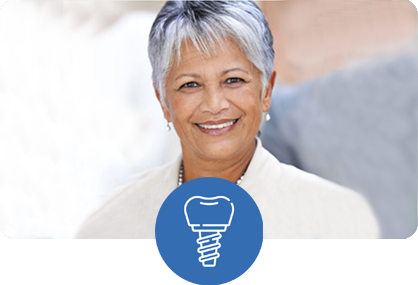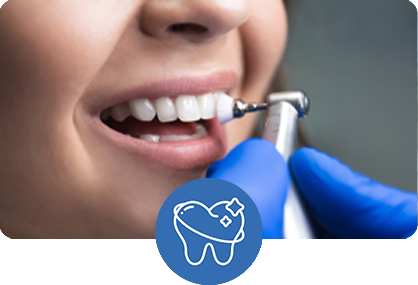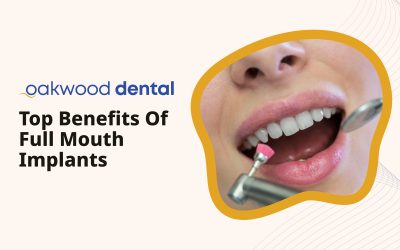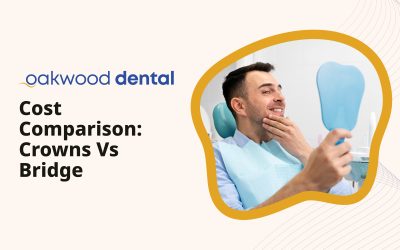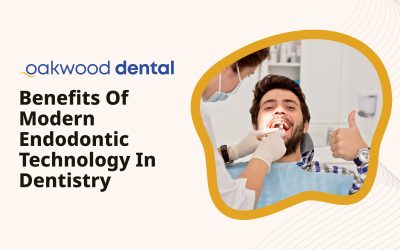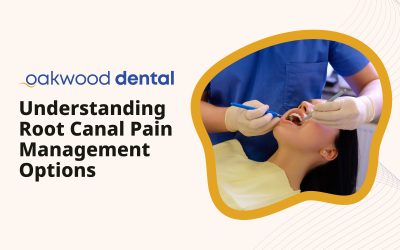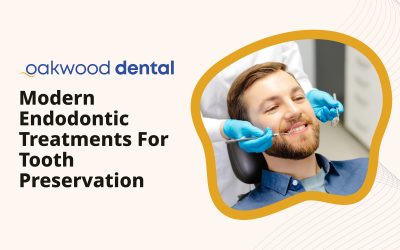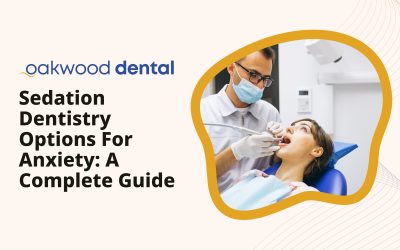Key Takeaways
- Modern dental implants offer superior longevity and functionality compared to traditional tooth replacement options, with success rates exceeding 95% over 10+ years
- Advanced 3D imaging and digital planning tools have revolutionized implant placement precision, reducing complications by up to 70%
- Computer-guided surgical techniques minimize invasiveness and improve recovery times, often reducing healing periods by 30-50%
- Innovative materials and surface treatments enhance osseointegration for better long-term outcomes, with micro-textured surfaces increasing bone contact by up to 40%
- At Oakwood Dental Clinics, we utilize the latest implant technologies for optimal patient results, offering personalized treatment plans using state-of-the-art equipment
- Full arch reconstruction techniques have made comprehensive tooth replacement more accessible, often requiring 50-70% fewer implants than traditional methods
- Digital impression systems have largely replaced traditional methods, improving accuracy by up to 25% while enhancing patient comfort
- Minimally invasive protocols have significantly reduced post-operative discomfort and shortened recovery times by up to 60%
Understanding Modern Dental Implant Technology
Dental implants have changed restorative dentistry, giving patients replacement teeth that look, feel, and function like natural teeth. At Oakwood Dental Clinics, we use the newest dental implant technology to get the best results for our patients. The changes in implant dentistry over the past few decades are among the biggest improvements in modern oral healthcare, changing the lives of millions who used to have few options for replacing teeth.
A dental implant is basically an artificial tooth root placed into your jaw to hold a replacement tooth or bridge. Unlike dentures or bridges that sit on top of the gums, implants are surgically put into the jawbone, creating a stable base for artificial teeth while also preserving bone structure. This key difference gives implants their amazing stability and natural feel, letting patients eat, speak, and smile with complete confidence. The titanium posts that act as artificial roots trick the body into treating them as natural tooth structures, preventing the bone loss that usually happens after tooth loss.
The basic concept of osseointegration—where the implant fuses with the jawbone—is still the foundation of successful implant dentistry. But technology has greatly improved how we plan, place, and restore dental implants, making the whole process more predictable, comfortable, and successful than ever before. This biological process, first discovered by Swedish orthopedic surgeon Per-Ingvar Brånemark in the 1950s, involves the direct connection between living bone and the surface of the artificial implant. Modern implants achieve osseointegration rates of nearly 98% in healthy patients, a big improvement from early systems that had much higher failure rates.
At Oakwood Dental Clinics’ implant center, our specialists use these cutting-edge technologies to give patients implant solutions that can help them eat better, look younger, and feel more confident. The prevention of bone loss that implants offer provides a better long-term youthful appearance compared to other tooth replacement options. Studies have shown that patients with dental implants keep about 75% more jawbone volume over a 10-year period compared to those with traditional dentures, directly contributing to facial appearance and preventing the aged look often associated with long-term denture use.
Advanced Imaging and Treatment Planning Innovations
One of the biggest technological jumps in implant dentistry has been in diagnostic imaging and treatment planning. We no longer rely only on two-dimensional X-rays to plan implant placement. These old methods gave limited information about bone volume and density, often leading to poor implant positioning or unexpected problems during surgery. The move to three-dimensional imaging has transformed the precision with which implants can be planned and placed, dramatically improving both surgical efficiency and long-term results.
Today, high-resolution 3D imaging technology allows our specialists to create detailed three-dimensional models of a patient’s oral anatomy. This gives us unprecedented views of bone density, nerve locations, and sinus positions—all critical factors in successful implant placement. The ability to evaluate these anatomical structures with submillimeter accuracy enables our team to identify potential challenges before surgery begins, significantly reducing risks and ensuring optimal implant positioning. Modern software allows us to simulate various implant positions and angles, testing different scenarios virtually before deciding on the final treatment plan.
Cone Beam Computed Tomography (CBCT) has become an essential tool in modern implant dentistry. This technology produces detailed 3D images of the patient’s jaw, teeth, and surrounding structures, allowing for precise measurement of available bone and identification of the optimal implant position, size, and angle. Unlike traditional CT scans, CBCT uses much less radiation (up to 10 times less) while providing better detail of bone shape and density. The resulting data can be manipulated in specialized software to create views from any angle, giving dentists comprehensive information about the surgical site. This level of detail is particularly valuable when working near important anatomical structures like nerves or sinuses.
Digital Smile Design is another revolutionary technology that enables our team to visualize and plan the final aesthetic outcome before treatment begins. By digitally mapping facial and dental proportions, we can create a preview of the expected results, ensuring that both functional and aesthetic goals are achieved. This approach involves the patient in the planning process, allowing them to provide input on the desired appearance of their final restoration. By combining facial photographs, intraoral scans, and CBCT data, we can design restorations that match the patient’s unique facial features, creating truly personalized results that look natural from every angle.
These advanced planning tools have significantly improved the predictability of implant treatments at Oakwood Dental Clinics, minimizing risks and maximizing outcomes for our patients. The integration of multiple digital datasets—including radiographic information, intraoral scans, and facial analysis—creates a comprehensive virtual patient record that guides every aspect of treatment. This digital workflow not only enhances precision but also improves communication between specialists, laboratory technicians, and patients, ensuring that everyone shares the same vision for the final result.
Computer-Guided Surgical Techniques
The integration of digital planning with surgical execution represents one of the most exciting innovations in implant dentistry. Computer-guided implant surgery systems have transformed the way implants are placed, offering unprecedented precision and minimizing invasiveness. This technology bridges the gap between virtual planning and clinical reality, allowing surgeons to transfer the exact positions determined during the planning phase directly to the patient’s mouth with remarkable accuracy. Studies have shown that guided surgery can achieve positional accuracy within 0.5mm of the planned location, a level of precision impossible to achieve with traditional freehand techniques.
Using data from 3D scans, specialized software creates surgical guides that direct the precise placement of implants. These guides ensure that implants are positioned exactly as planned, with submillimeter accuracy. This level of precision is particularly valuable in cases with limited bone availability or when working near vital anatomical structures. The surgical guides are typically made using 3D printing technology, creating rigid templates with precisely positioned metal sleeves that control both the location and angle of the implant drills. This eliminates the guesswork traditionally associated with implant placement and reduces the surgeon’s reliance on subjective judgment during the procedure.
The benefits of computer-guided surgery include:
- Enhanced precision in implant positioning, with studies showing up to 85% improvement in accuracy compared to freehand techniques
- Reduced surgical time, often decreasing procedure duration by 30-50% compared to conventional approaches
- Minimally invasive procedures (often flapless surgery) that preserve soft tissue and reduce post-operative swelling by up to 70%
- Less post-operative discomfort, with patients reporting pain scores averaging 2-3 points lower on standardized scales
- Faster healing times, with many patients returning to normal activities within 24-48 hours rather than the traditional 3-7 days
- Improved implant positioning for optimal biomechanics, potentially extending the longevity of the restoration by 10-15%
At Oakwood Dental Clinics, our specialist team utilizes these advanced surgical techniques to provide patients with more comfortable experiences and optimal outcomes. For many patients, the reduced invasiveness means significantly improved recovery experiences, as detailed in our post-implant surgery care guidelines. The predictability offered by guided surgery also enables better coordination between the surgical and restorative phases of treatment, often allowing for the prefabrication of provisional restorations that can be placed immediately after implant insertion, further enhancing patient satisfaction and comfort during the healing period.
Immediate Loading and Accelerated Treatment Protocols
Traditional dental implant protocols often required months of healing time between implant placement and the attachment of replacement teeth. One of the most significant innovations in recent years has been the development of immediate loading protocols, sometimes called “teeth in a day” or “same-day implants.” This big change in implant dentistry has dramatically altered patient expectations and experiences, eliminating the long periods of being without teeth that were previously an unavoidable part of implant treatment. Research has shown that properly selected cases can achieve success rates with immediate loading that are comparable to traditional delayed loading protocols, typically exceeding 95% over five years.
This innovative approach allows for the placement of temporary teeth on the same day as implant surgery, eliminating the period of being without teeth during healing. For qualifying patients, this represents a significant improvement in quality of life and treatment experience. The psychological and social benefits are substantial, as patients can maintain their appearance and confidence throughout the treatment process. Additionally, immediate provisional restorations help shape the gum architecture during healing, often resulting in more aesthetic final outcomes with natural-looking soft tissue contours.
The development of immediate loading protocols has been made possible by improvements in implant design, surface technology, and surgical techniques. Special implant designs with enhanced primary stability allow for immediate function in many cases. These designs typically feature tapered bodies, aggressive thread patterns, and self-tapping features that achieve excellent initial mechanical engagement with the bone. This primary stability, measured using techniques like insertion torque values or resonance frequency analysis, is the critical factor that determines whether immediate loading is appropriate. Generally, implants achieving insertion torque values above 35 Ncm or Implant Stability Quotient (ISQ) values above 70 are considered suitable candidates for immediate loading protocols.
Our full arch dental implant recovery guide provides detailed information about the recovery process for patients undergoing this transformative procedure. While immediate loading offers significant advantages, proper patient selection and careful planning remain essential for success. Factors such as bone quality, habits like teeth grinding, and the patient’s overall health must be carefully evaluated to determine suitability for accelerated protocols. When appropriately implemented, these approaches can reduce the overall treatment time by 3-6 months compared to conventional protocols, without compromising the long-term results.
At Oakwood Dental Clinics, we carefully evaluate each patient to determine if immediate loading protocols are appropriate, considering factors such as bone quality, implant stability, and bite forces. The benefits of full mouth implants with immediate loading can be life-changing for suitable candidates. Our comprehensive assessment includes detailed radiographic analysis, evaluation of existing teeth, assessment of bite patterns, and consideration of health factors that might influence healing. This thorough approach ensures that we recommend immediate loading only when the clinical conditions favor a successful outcome, maintaining our commitment to evidence-based practice and patient-centered care.
Material Innovations and Surface Technology
The materials used in dental implants have evolved significantly, with ongoing research focused on enhancing biocompatibility, strength, and aesthetic outcomes. While titanium remains the gold standard due to its exceptional biocompatibility and proven track record, several innovations have improved implant performance. The development of titanium alloys (particularly Ti-6Al-4V) has enhanced the mechanical properties of implants, providing greater strength and resistance to fracture while maintaining excellent biocompatibility. These advances have allowed for the development of smaller diameter implants that can be used in areas with limited bone volume without compromising structural integrity.
Surface modifications have been a particular area of advancement. Modern implants feature specially treated surfaces that enhance osseointegration—the crucial process where bone cells attach to the implant surface. These treatments include:
- Micro-roughened surfaces that increase the surface area for bone contact by up to 600% compared to machined surfaces, accelerating osseointegration by 30-40%
- Hydrophilic surfaces that attract blood and proteins, accelerating the healing process and reducing osseointegration time from 3-6 months to as little as 6-8 weeks in optimal conditions
- Bioactive coatings that actively stimulate bone formation through the incorporation of materials like hydroxyapatite, calcium phosphate, or growth factors that mimic the mineral composition of natural bone
- Antimicrobial surfaces that reduce the risk of infection through modifications such as silver nanoparticle incorporation or photocatalytic coatings that have demonstrated up to 99.9% reduction in bacterial colonization in laboratory studies
- Laser-modified surfaces that create precise micro and nano-topographies optimized for cellular attachment and proliferation, potentially improving long-term stability by 15-20%
For patients seeking alternatives to titanium, zirconia (ceramic) implants have emerged as a viable option. These white implants offer excellent biocompatibility and aesthetics, particularly beneficial in cases where the implant might be visible or for patients with specific concerns about metal allergies. Modern zirconia implants utilize advanced formulations like yttria-stabilized tetragonal zirconia polycrystal (Y-TZP), which provides exceptional strength and fracture resistance. Clinical studies have shown osseointegration rates comparable to titanium implants, with some research suggesting superior soft tissue response with reduced inflammatory markers and bacterial adhesion.
At Oakwood Dental Clinics, we offer long-lasting dental implant solutions utilizing the most appropriate materials for each patient’s specific needs. Our commitment to staying at the forefront of material science ensures that our patients benefit from implants that not only look natural but also provide exceptional durability and function. We carefully select implant systems based on extensive clinical research and documented long-term success rates, prioritizing products with comprehensive scientific validation rather than simply adopting the latest trends. This evidence-based approach ensures that our patients receive implant solutions with predictable outcomes and excellent long-term prognosis.
Minimally Invasive Techniques and Patient Comfort
The evolution of implant dentistry has placed increasing emphasis on minimizing invasiveness and enhancing patient comfort throughout the treatment process. Several innovations have contributed to making implant procedures more comfortable and accessible to a wider range of patients. The shift toward minimally invasive approaches represents a fundamental change in surgical philosophy, focusing on preserving tissue integrity and reducing biological disruption while achieving the same therapeutic goals. Clinical studies have demonstrated that minimally invasive techniques can reduce post-operative pain by up to 60% and accelerate soft tissue healing by 30-50% compared to traditional approaches.
Flapless surgery techniques, made possible by precise 3D planning and guided surgery, allow implants to be placed through small punctures in the gum rather than requiring large incisions. This approach significantly reduces post-operative swelling, pain, and healing time. By maintaining the blood supply to the bone, flapless techniques may also preserve bone volume more effectively than traditional flap approaches. The reduced surgical trauma translates to less inflammation, minimal disruption to the blood vessels, and faster recovery. Patients undergoing flapless surgery typically experience 70-80% less post-operative discomfort and can often return to normal activities within 24 hours, compared to several days with conventional techniques.
For patients with dental anxiety, sedation dentistry options have made implant treatment more accessible. From nitrous oxide to oral sedation and IV sedation, these approaches help patients remain comfortable and relaxed throughout their procedures. Studies indicate that approximately 30-40% of adults experience some degree of dental anxiety, with 5-10% suffering from dental phobia severe enough to avoid necessary treatment. Appropriate sedation protocols can reduce anxiety scores by 60-80% on validated psychological assessment scales, making treatment accessible to patients who might otherwise avoid dental care entirely. At Oakwood Dental Clinics, our sedation options are tailored to each patient’s anxiety level and medical history, ensuring both comfort and safety.
Advanced healing protocols, including the use of platelet-rich plasma (PRP) and platelet-rich fibrin (PRF) derived from the patient’s own blood, can accelerate tissue healing and reduce recovery time. These biologics harness the body’s natural healing factors to optimize the implant integration process. PRP and PRF contain concentrated growth factors that stimulate cell growth, collagen production, and formation of new blood vessels. Clinical studies have demonstrated that these preparations can accelerate soft tissue healing by 40-60% and may enhance bone formation around implants by 15-25% during the early healing phase. The completely natural origin of these materials eliminates concerns about immunological reactions or disease transmission.
At Oakwood Dental Clinics, our patient-centric approach means we prioritize comfort at every stage of treatment. Our modern facilities are designed to provide a relaxing environment, and our team is trained in the latest techniques to ensure the most comfortable experience possible. We employ advanced pain management protocols that begin before treatment with preemptive pain relief and continue through the recovery period with carefully selected medications that maximize comfort while minimizing side effects. Our comprehensive approach to patient comfort addresses both physical and psychological aspects of the treatment experience, recognizing that emotional well-being is equally important to a positive outcome.
Digital Dentistry and CAD/CAM Restorations
The digital revolution has transformed not only how implants are placed but also how the final restorations are designed and manufactured. Computer-Aided Design and Computer-Aided Manufacturing (CAD/CAM) technology has brought unprecedented precision and efficiency to the creation of implant restorations. This digital workflow represents a complete change from traditional techniques, offering advantages in accuracy, efficiency, and material options that were previously impossible. Studies comparing digital and conventional workflows have demonstrated improvements in marginal fit of 15-30%, with some systems achieving marginal gaps of less than 20 microns—well below the 120-micron threshold generally considered clinically acceptable.
Digital impression systems have largely replaced traditional impression materials in modern implant dentistry. Intraoral scanners capture precise digital models of the patient’s mouth, eliminating the discomfort and inaccuracies sometimes associated with conventional impressions. These scanners use various optical technologies to create highly detailed three-dimensional representations of oral structures. Modern systems can achieve accuracy within 10-30 microns, exceeding the precision possible with conventional impression materials. Beyond accuracy, digital impressions offer significant advantages in patient comfort, eliminating the gag reflex often triggered by traditional impression materials and reducing chair time by 40-60% for many procedures.
These digital models are then used with specialized software to design custom abutments and restorations that perfectly match the patient’s anatomy and aesthetic requirements. The designs can be previewed and adjusted virtually before fabrication, ensuring optimal fit and appearance. Advanced software tools enable precise control over emergence profiles, contours, and bite relationships, allowing for biomechanically optimized restorations that distribute forces appropriately and maintain long-term stability. The digital design environment also makes it easier for dentists and laboratory technicians to work together, sharing files electronically and communicating about design changes in real-time, regardless of where they’re located.
Once designed, restorations are milled from high-quality materials such as zirconia, lithium disilicate, or hybrid ceramics using precision milling machines. This computer-controlled manufacturing process ensures consistent quality and exceptional fit. Modern milling units can achieve tolerances of 5-10 microns, producing restorations with excellent marginal integrity and internal fit. The controlled manufacturing environment eliminates many variables associated with traditional fabrication methods, resulting in more predictable outcomes and fewer adjustments required during delivery. Additionally, CAD/CAM manufacturing allows access to materials with superior mechanical properties that cannot be processed using conventional techniques, such as high-strength monolithic ceramics that combine excellent aesthetics with fracture resistance exceeding 1000 MPa.
At Oakwood Dental Clinics, we leverage top dental technologies for efficient patient care, including advanced CAD/CAM systems. This digital workflow not only improves the quality of our restorations but often reduces the number of appointments needed, making the process more convenient for our patients. The integration of digital scanning, design, and manufacturing has streamlined our clinical protocols, typically reducing treatment time by 30-50% compared to conventional methods while simultaneously improving outcomes. Our investment in these technologies reflects our commitment to providing state-of-the-art care that maximizes both clinical excellence and patient convenience.
Full Arch Reconstruction and All-on-X Concepts
For patients missing all or most of their teeth, full arch reconstruction using implants represents one of the most significant advances in modern dentistry. The development of the All-on-4® concept and similar approaches (sometimes called All-on-X) has made full arch rehabilitation more accessible and efficient. These innovative protocols have transformed the treatment of complete tooth loss, offering fixed solutions to patients who previously had limited options beyond removable dentures. Clinical studies tracking outcomes of these approaches have demonstrated success rates of 94-98% over periods of 5-10 years, with high levels of patient satisfaction and improved quality of life measures.
These innovative protocols utilize strategic implant placement—typically four to six implants per arch—to support a full set of fixed teeth. By angling the posterior implants, longer implants can be used, and vital structures like the sinus cavities or nerve canals can often be avoided. This approach frequently eliminates the need for bone grafting, making treatment possible for patients who previously might not have been candidates for implants. The tilted implant concept takes advantage of available bone in the anterior regions, where bone loss tends to be less severe even in patients who have been without teeth for a long time. Studies have shown that properly designed prostheses supported by tilted implants can distribute biting forces effectively, with stress patterns similar to those seen in conventional straight implant arrangements.
Combined with immediate loading protocols, these techniques often allow patients to receive a fixed provisional restoration on the same day as implant placement. Our complete recovery guide for full arch dental implants outlines what patients can expect throughout the healing process. The psychological impact of this immediate transformation cannot be overstated—patients enter treatment with failing teeth or no teeth and leave with a fixed, aesthetic smile that restores both function and confidence. Research on patient-reported outcomes shows significant improvements in oral health-related quality of life measures, with average increases of 30-40 points on standardized assessment scales following All-on-X treatment.
The final restorations for these full-arch cases benefit from advances in materials science, with high-strength zirconia and advanced acrylics providing excellent aesthetics, durability, and biocompatibility. Computer-designed and milled from solid blocks of material, these prostheses offer precision fit and natural appearance. Modern zirconia materials can achieve flexural strengths exceeding 1200 MPa while maintaining translucency properties that mimic natural teeth. This combination of strength and aesthetics makes these materials ideal for full-arch restorations that must withstand significant biting forces while providing natural-looking results. Advanced polymer materials reinforced with fiber networks offer alternative options with shock-absorbing properties that may benefit patients with teeth grinding habits or those with natural teeth on the opposing arch.
At Oakwood Dental Clinics, we understand the importance of proper nutrition during recovery, which is why we provide guidance on the best foods to eat after dental implant surgery. Our comprehensive approach ensures patients are supported throughout their treatment journey. Nutritional counseling is an important part of our post-operative care, as proper nutrition can speed up healing and reduce complications. We provide detailed dietary recommendations that progress through the healing phases, beginning with nutrient-dense soft foods during initial healing and gradually transitioning to a more normal diet as osseointegration advances. This nutritional support, combined with our careful surgical protocols and advanced prosthetic solutions, helps ensure optimal outcomes for our full-arch reconstruction patients.
Conclusion
The field of dental implantology has undergone remarkable transformation through technological innovation. From advanced 3D imaging and computer-guided surgery to immediate loading protocols and bioactive materials, these developments have made implant treatment more precise, comfortable, and successful than ever before. The combined effect of these advancements has been a major shift in how dental professionals approach tooth replacement, with implant solutions increasingly becoming the standard of care rather than an exceptional option for select cases.
At Oakwood Dental Clinics, we remain committed to embracing these innovations while maintaining our focus on individualized patient care. Our specialists continuously update their knowledge and skills to provide the most advanced implant solutions available. This commitment to ongoing education ensures that our patients benefit from evidence-based treatments that incorporate the latest scientific research and technological developments. We carefully evaluate emerging technologies and techniques, implementing those that demonstrate clear benefits in terms of patient outcomes, comfort, and long-term success.
The future of dental implant technology looks very promising, with ongoing research and development poised to bring even more exciting advances to this field. Areas of active investigation include bioactive surface modifications that may further accelerate osseointegration, smart implants with sensing capabilities to monitor healing and detect early signs of complications, and advanced biomaterials that more closely mimic the properties of natural tooth structure. Regenerative approaches using stem cells and growth factors may eventually allow for the regeneration of natural teeth rather than artificial replacement, representing the ultimate goal in tooth replacement therapy.
If you’re considering dental implants or would like to learn more about the latest innovations in implant dentistry, we invite you to contact our office to schedule a consultation. Our team will be happy to discuss how these advanced technologies can be applied to your specific situation to create a beautiful, functional, and long-lasting smile. During your consultation, we’ll conduct a comprehensive examination, discuss your goals and concerns, and develop a personalized treatment plan that leverages the most appropriate technologies for your unique needs. With proper care and maintenance, modern dental implants can provide decades of reliable function and aesthetic satisfaction, making them one of the most valuable investments in long-term oral health and quality of life.

 718-979-2121
718-979-2121